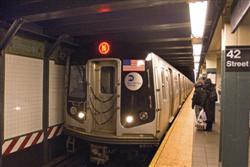John Petro
Albany’s MTA Fix

In a refreshing display of transparency, the current plan to save the MTA (the last of about a dozen such plans) is available for the public to peruse. The plan has its problems, but at the end of the day is good enough to solve the current budget crisis.
First, I’m going to raise a big red flag on the provision that would allow the state legislature to veto any item it doesn’t like from the MTA’s capital plan. This is perhaps less scary when both the Assembly and Senate leaders are from New York City and presumably have the interests of the city at heart. But what happens if upstate leaders once again control the legislature? Do we want leadership from upstate to decide whether or not we have a Second Avenue Subway? This is a scary prospect indeed.
Second, the plan increases the cost of owning a car in the city but without the benefits of reducing congestion and air pollution that bridge tolls would have supplied. The plan increases vehicle registration fees but does not include tolls. Tolls would have reduced the burden on our city streets by diverting some drivers away from the currently-free bridges. Those that must use the bridges anyway would have enjoyed less traffic. Now, drivers are stuck paying more for driving but without any of the benefits. A more useful strategy would be to link any increased fees, taxes, or tolls to vehicle usage, not ownership.
Third, it comes as a bit of a slap in the face that half of the proposed increase in taxi fares are going to be sent upstate to fund road projects. Basically the democrats in Albany are throwing a bone to the republicans, but it does not appear that the republicans are actually going to change their minds and vote for the plan. The unfortunate outcome will be more roads, more driving, more dependence on oil, and more pollution upstate.
However, the primary test for the MTA plan is whether or not it actually addresses the crisis. It appears that this plan does. There are reports that the current plan will raise about $1.7 billion a year for the Authority, thanks in large part to the payroll tax. This is less than the approximately $2.1 billion that would have been raised under the Ravitch Plan, but should be enough to address the capital needs of the mass transit system. The payroll tax, under the plan put forward by Smith, would give the suburban counties a slight break. Westchester, Nassau, Suffolk, and the counties in New York City would pay a higher rate on payrolls. This seems fair enough to me, but hasn’t stopped the representatives from Long Island and Westchester from complaining that they will have to pay more than Orange, Putnam, Rockland, and Duchess Counties. The fact is, however, that Westchester and Long Island are much more reliant on the MTA and should pay accordingly.
The biggest victory is that the current plan would greatly reduce the MTA’s reliance on debt to fund its program of repair, maintenance, and expansion. It was this reliance on debt that created the current budget crisis. It is unclear whether the new revenue would be used to pay down existing debt or to finance the next capital plan. However, at $1.7 billion a year, these funds could cover the $8.5 billion gap in its next five-year capital plan. That, in the end, is what matters the most.
John Petro: Author Bio | Other Posts
Posted at 12:03 PM, Apr 23, 2009 in
New York | Transporation | Urban Affairs
Permalink | Email to Friend










